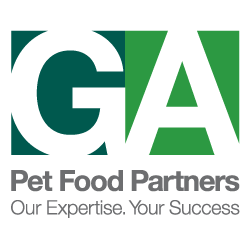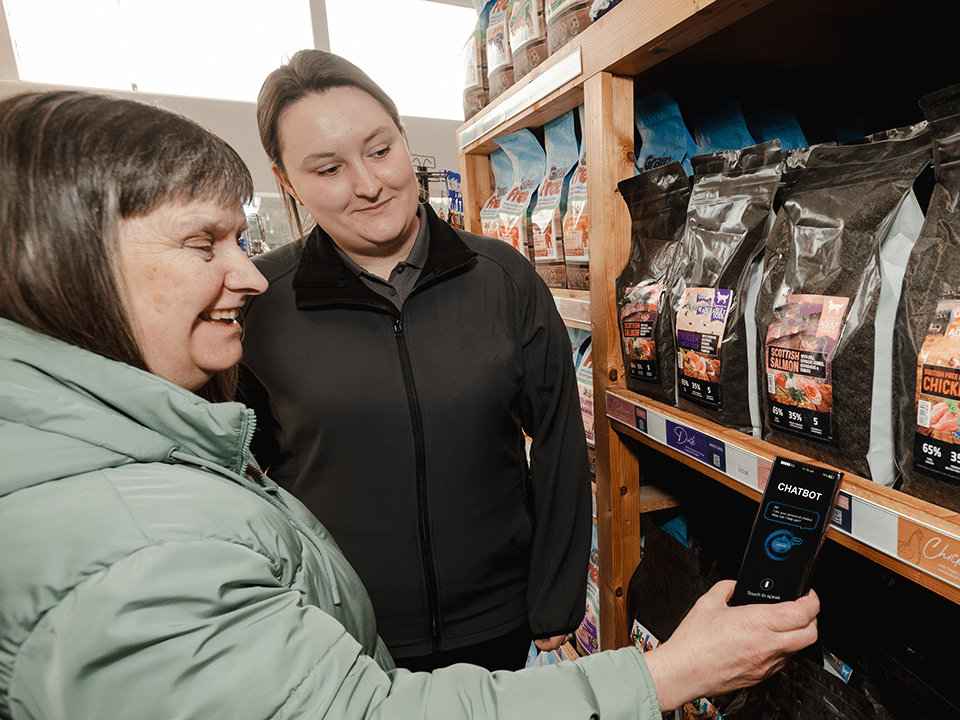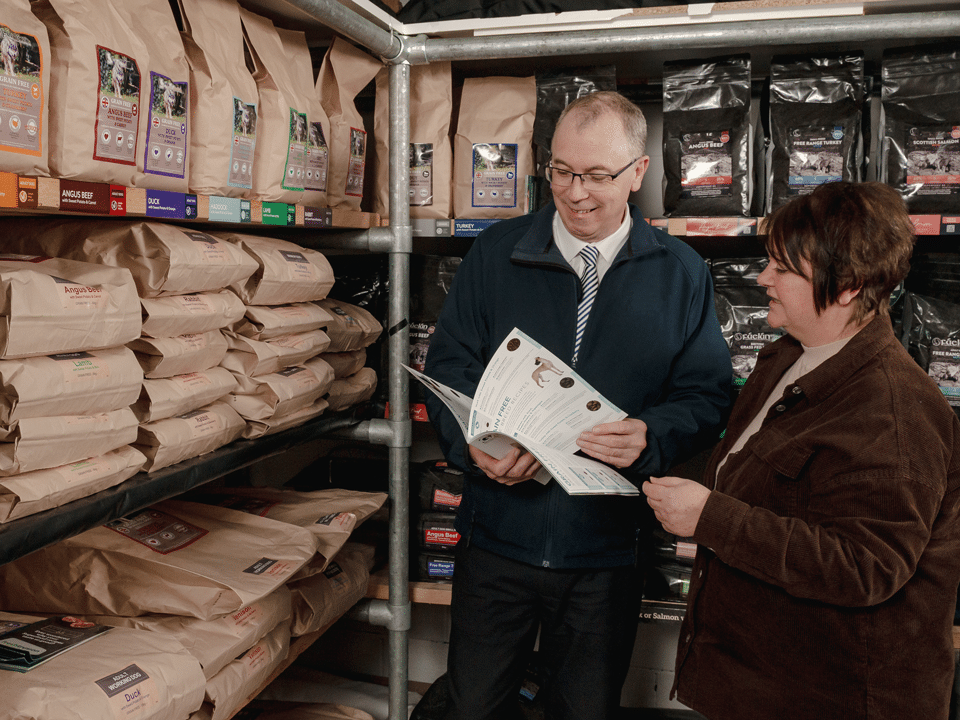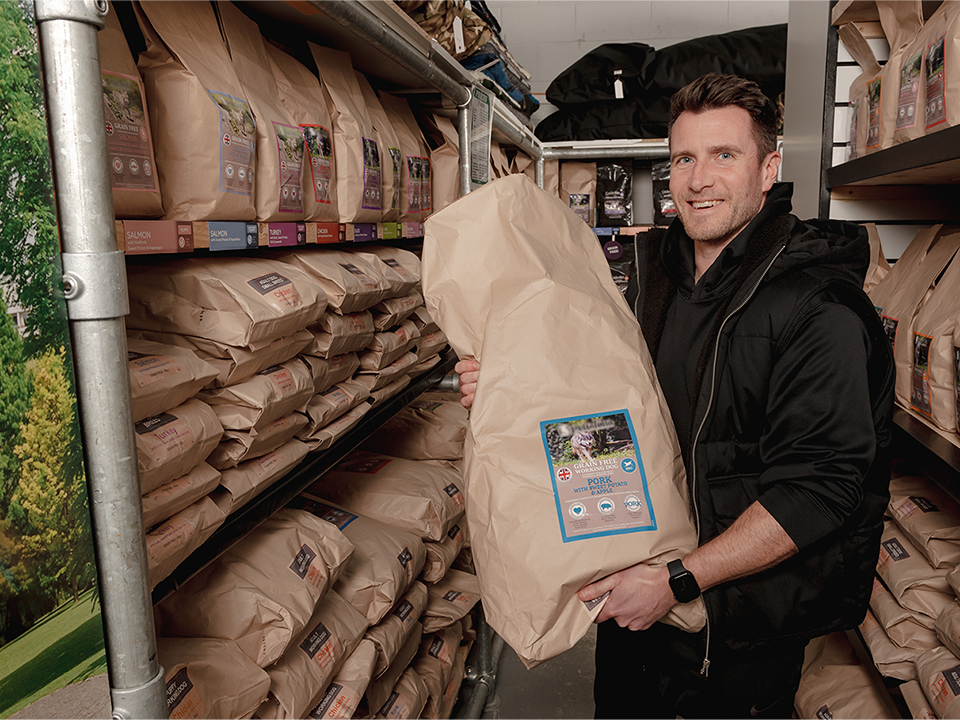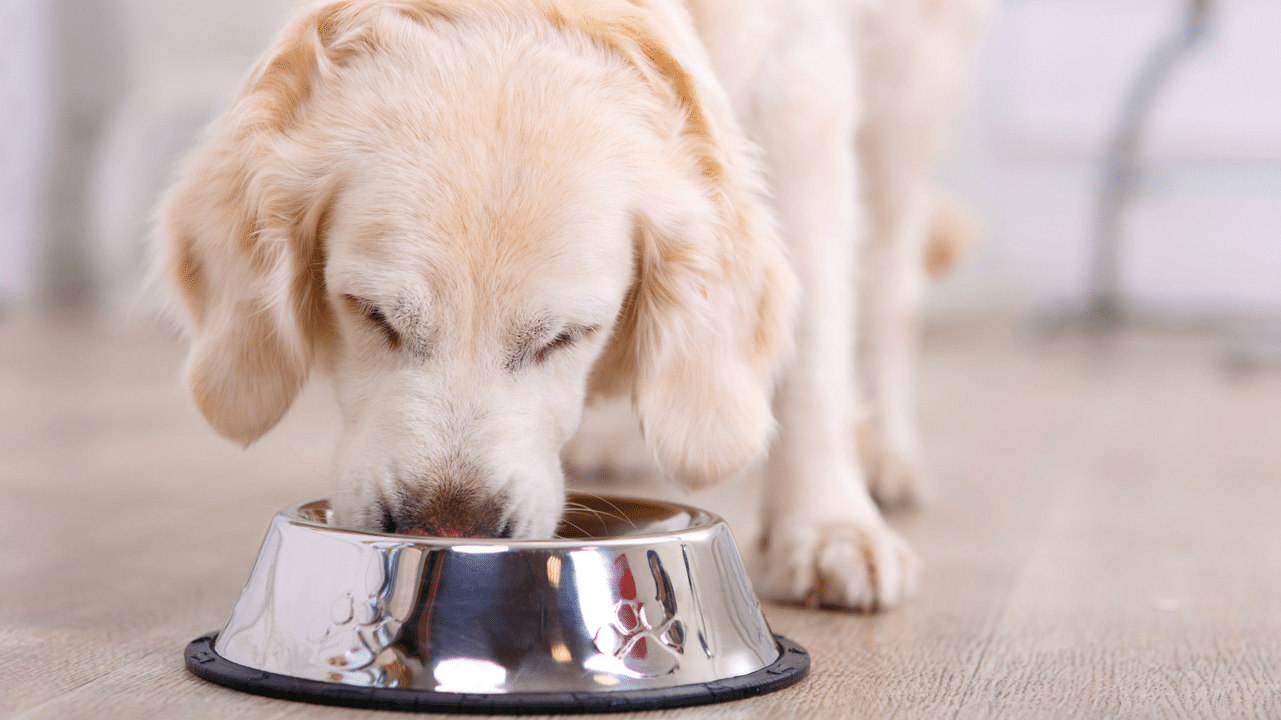
Suppliers to the human food industry are under increasing scrutiny to address growing consumer interest and sustainability demand while limiting environmental impact. In light of this, the pet food industry too must address the same issues – and the use of Insect Based Pet Food and proteins has been highlighted as a potential method to achieve this.
Insect proteins have the potential to support a circular economy with the human food chain, as farmed insects can be reared on waste organic matter from the human food chain. This ability to reprocess waste material utilises the resources to a greater degree and reduces its waste volume2. A symbiotic relationship between human food production and insect rearing is perceived to be a key benefit and a method of achieving a more sustainable supply chain.
Utilising ‘vertical farming’, the requirement for large quantities of quality land for insect rearing is significantly less than that required for traditional protein production and thus is not geographically restricted. Despite their ability to utilise waste material in production, energy consumption is a source of environmental impact for insect production and processing. However, despite this, the cumulative environmental impact of insect protein rearing is considered to be lower than traditional livestock rearing systems.
Currently, authorisation in the UK & Europe has led to a strong uptake in the use of insects within the aquafeed industry and an increased interest for use in the feed for farmed species3. Within the pet food industry, under regulation No 2017/893, only seven insect species are approved for use4. All species have a high feed conversion rate, allowing for a high turnover rate from hatching to processing, thus ensuring a consistent supply chain. Nutritionally these species vary in amino acid profile (Table 15) and digestibility (Table 25) and highlight the diverse potential for use as protein sources.
Table 1. Proximate composition (percentage of dry matter), indispensable amino acid composition (percentage of CP) and amino acid (AA) score of insect and reference substrates.
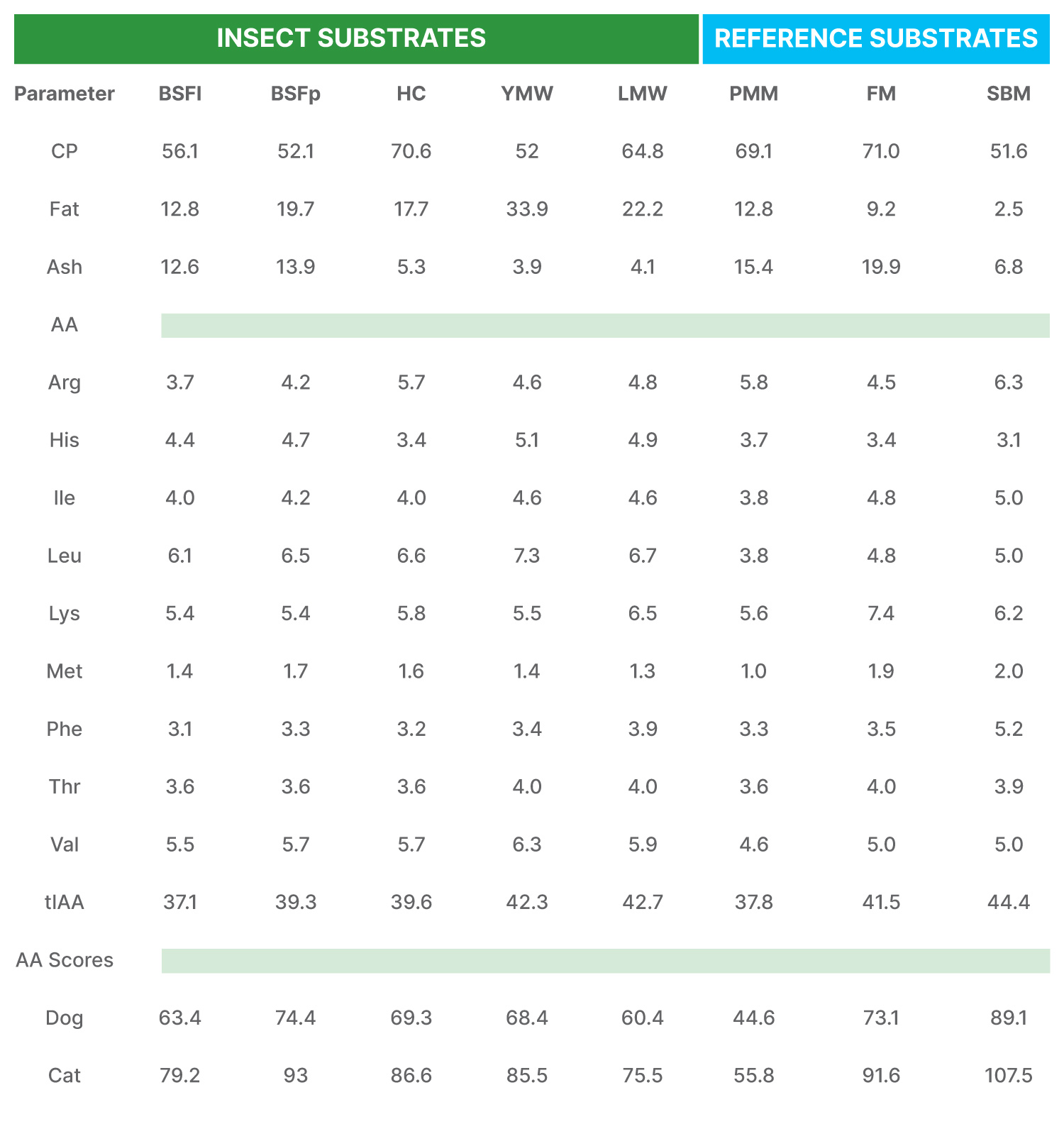
CP, Crude Protein; BSFI and BSFp, black soldier fly larvae and pupae; HC, house cricket; YMW, yellow mealworm; LMW, lesser mealworm; PMM, poultry meat meal; FM, fish meal; SBM, soya bean meal; tlAA, total indispensable amino acids.
†Calculated as described in Kerr et al. (2013) using minimal requirements for growth of kittens and puppies6 as reference values.
Black Solider Fly Larvae (Hermetia illucens):
Black Soldier Fly and their larvae (BSFL) have been identified as species of particular interest for insect-based diets. Fatty acid levels in BSFL are high, primarily in saturated fats, due to high levels of lauric acid. Ongoing research has shown it possible to manipulate the feed substrate of BSFL to give a desired nutritional and analytical profile. Ewald et al. (2020)7 found BSFL fed mussel-based substrate that had high levels of eicosapentaenoic acid (EPA) and docosapentaenoic (DHA) and presented with an altered fatty acid (FA) profile over time.

Although some of this can be attributed to growth and maturation, it also shows the BSFL’s ability to transfer and subsequently retain nutrients from feed substrate to tissue. Similar trends have been found in the correlation of feed substrate to the levels of crude ash, fibre and amino acid profiles found in BSFL on processing8. Although this manipulation could substantially benefit formulators to achieve desirable criteria, it also highlights the need for quality sourcing to maintain product consistency. Failure to do so could lead to an inferior and inconsistent end product.
BSFL oil is also an area of interest in pet food production. As a by-product of the processing of BSFL for the fish feed industry, this resource is readily available, and additional processing again aids a circular economy. Refining BSFL oil can reduce the level of saturated FAs present, aid palatability, and improve production characteristics such as viscosity 9. However, the presence of high levels of saturated fat could be of benefit in the inclusion of pet feed. Lauric acid has been previously studied for antimicrobial effects on Gram-positive bacteria. Spranghers et al. (2018)10 studied the impact of BSFL inclusion on the diet of weaning piglets. On weaning, nutritional and environmental stressors place gut microbiota under increased physical stress, which increases the risk of the growth of Gram-negative bacteria. As hypothesised, the inclusion of BSFL within the study diets was shown to have a desired antimicrobial effect. However, the high levels of lauric acid potentially impacted palatability and resulted in a reduced feed intake at high inclusion. Further research for optimal inclusion levels is required, but the potential for inclusion in puppy or kitten diets to utilise this added value could be of interest.
Yellow Meal Worm (Tenebrio Molitor):
As with Black Soldier Flies, yellow mealworms (YMW) can present a varied AA profile depending on their reared substrate. Of the approved species for pet food use, Yellow Mealworm typically presents with some of the highest fat levels (see Table 1) – although additional defatting processing can aid a more consistent raw material, with a reduced-fat level if formulation required. Yellow mealworms are commercially produced for inclusion in commercial fish feed and are a preferred species for rearers due to their short rearing time allowing for high turnover.
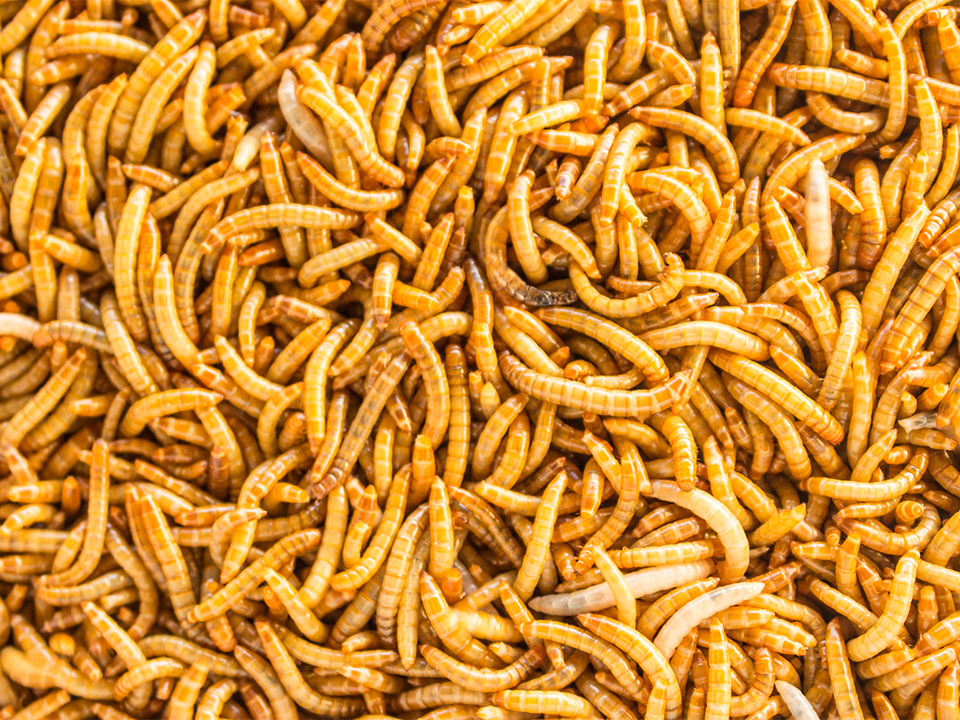
Belforti et al. (2015)11 successfully fed Yellow Mealworms to commercially kept rainbow trout at varying inclusion levels. Their study found no adverse impact on growth, diet acceptance, or digestibility. Yellow Mealworm has some of the highest in vitro digestibility results (see table 25), with levels similar or above to those of reference substrates such as a chicken meal. The use of Yellow Mealworms in fish feed highlights the nutritional similarities to conventionally used protein sources and the potential to substitute entirely or partially with insect protein.
Table 2. In vitro digestibility (%) of insect and reference substrates.
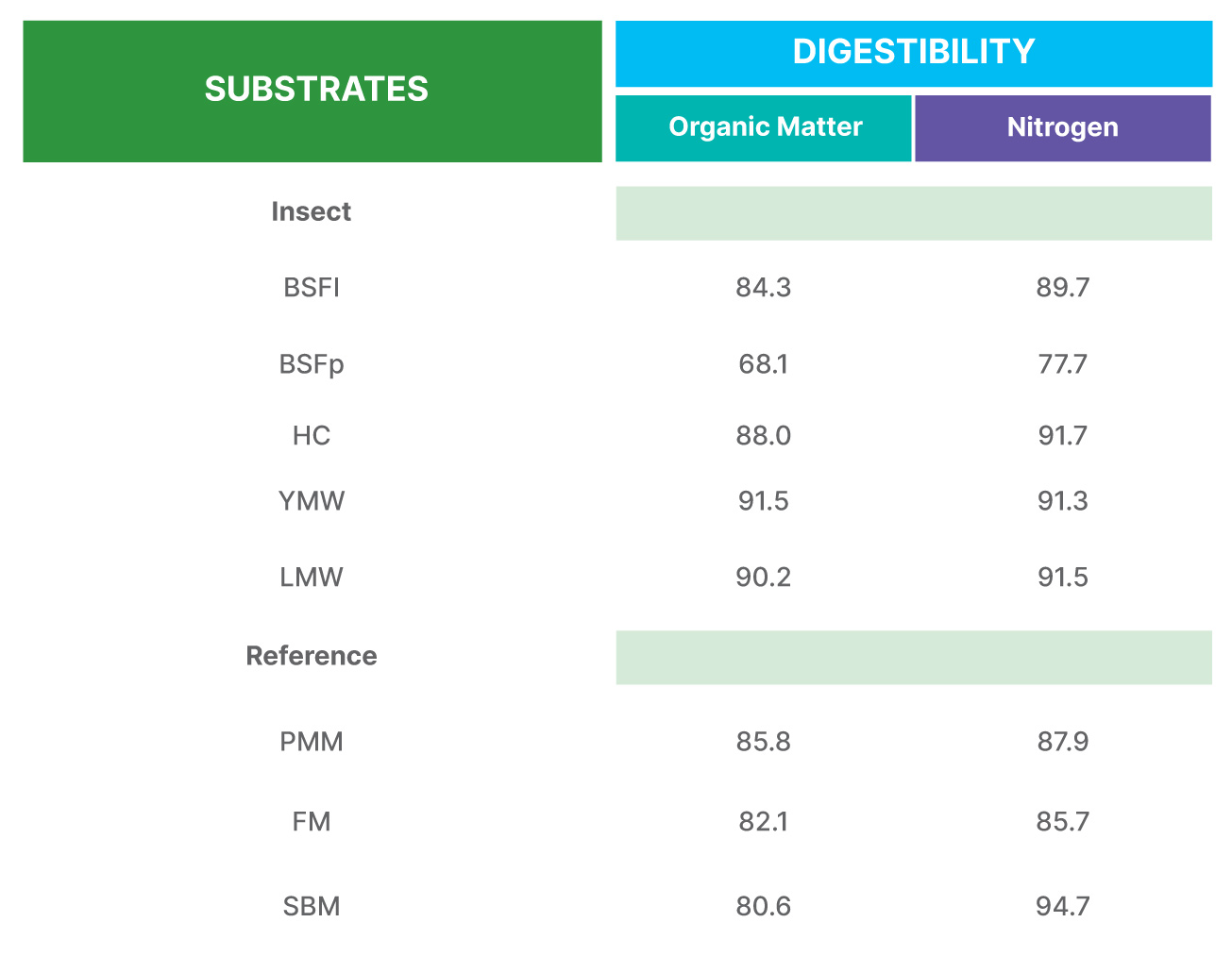
BSFI and BSFp, black soldier fly larvae and pupae; HC, house cricket; YMW, yellow mealworm; LMW, lesser mealworm; PMM, poultry meat meal; FM, fish meal; SBM, soyabean meal.
Crickets (House cricket (Acheta domesticus), Banded cricket (Gryllodes sigillatus) and Field Cricket (Gryllus assimilis):
Rearing of cricket species has been an established area of focus for the exotic and reptilian feeding markets, where often they are presented whole and live. Despite this use, nutritional information and details on the impact of feeding to monogastrics is limited. Preliminary studies do however show house crickets to be high in protein with moderate fat levels (See table 1).
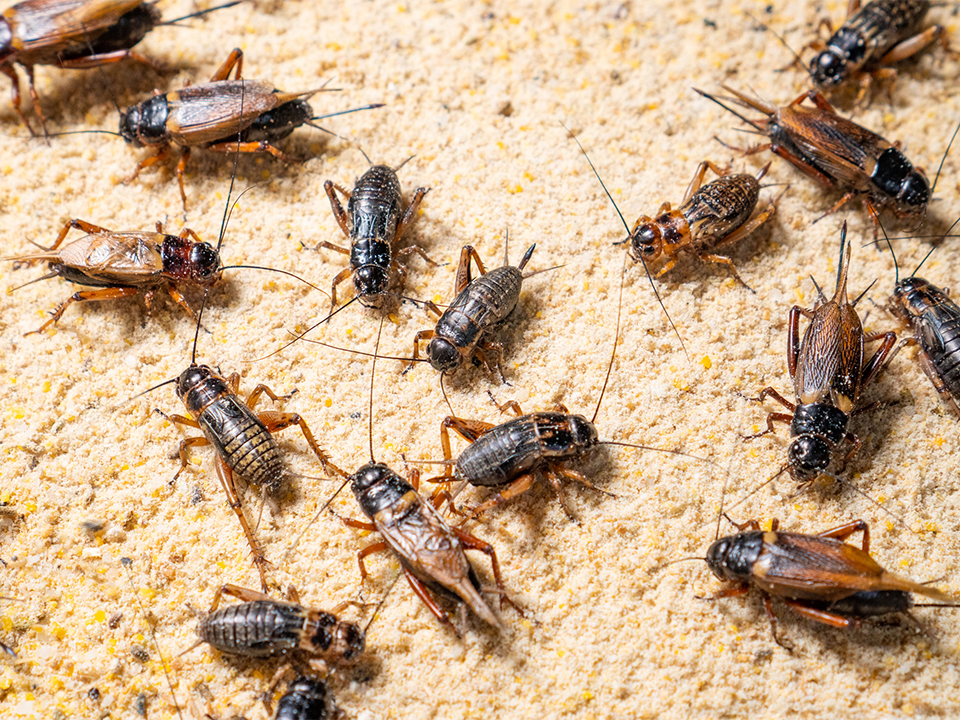
Kilburn et al. (2020)12 fed varying inclusion levels of cricket meal over a 29 day period to 32 beagles to assess digestibility. Findings showed that although faecal output increased linearly – suggesting digestibility decreased with an increased inclusion – the total digestibility of all diets regardless of cricket inclusion remained above 80%. The study supported that cricket meals can be deemed equally digestible to traditionally used soya or poultry proteins, and nutritionally crude protein levels matched.
Kilburn’s study is also one of many highlighting the unique role that chitin may play in increasing fibre content. Chitin is present in the exoskeleton of insects and, when consumed, acts as a polysaccharide dietary fibre, similar to that of cellulose13. Lei et al. (2019) carried out a three day feeding trial on beagles with a diet containing a low inclusion of insect protein, concluding that chitin could be responsible for an increase in digestibility14. However, several studies have found high inclusion levels correlate with a reduction in digestibility12 15. Further research is required to establish any impact the role of chitin may have in the inclusion of pet food, with a particular focus on digestibility and feed intake. Mitigating this through establishing optimal inclusion levels could however be worthwhile, as chitin could also have added benefits for inclusion in pet food. Chitins have been known to play a role in immune responses to pathogens inflammation control and potentially has prebiotic functioning. Islam and Yang (2017)16 fed diets containing 0.4% ‘ground mealworm larvae probiotic’ to broiler chicks and found increased feed conversion rate, reduced pathogenic bacterial burden and increased serum immunoglobulin (Ig) A and IgG levels.
To Bee or Not to Bee?
Despite the nutritional benefits and clear sustainability advantages of insect-based feeds, consumer acceptance of its use in pet food is varied. PROteinsect found that 70% of surveyed people deemed it acceptable to incorporate insect protein into the feed of farmed animal species17. However, 88% of survey participants highlighted that information about the use of insects was lacking.
As the culture of ‘pet parents’ grows, insect use in companion animals will require transparency and readily available information on aspects such as supply chain, nutritional profiles and current research findings to improve consumer acceptability3. In particular, feed safety is often raised as an area of concern by consumers. Preliminary studies by Vandeweyer et al. (2017)18 analysed batches from multiple rearing systems and across two insect species. Results found no presence of Salmonella, Listeria monocytogenes or Escherichia coli. The absence of such pathogens is a key factor for ingredient approval under EU regulations.
To date, no negative impacts of feeding insect-based diets have been documented19. However, data from controlled studies are often based on small sample sizes over short-term feeding durations. Further feeding trial data on palatability, acceptability and impact on health are required – for both short- and long-term feeding. Such data is vital to provide further insight into the optimal inclusion and use of insects in pet food formulation. Ensuring optimal nutrition with evidence-based claims will aid the owner’s acceptability of this novel ingredient.
References
1. Swanson, K. S., Carter, R. A., Yount, T. P., Aretz, J. & Buff, P. R. Nutritional Sustainability of Pet Foods. Adv. Nutr. 4, 141–150 (2013).
2. Acuff, H. L., Dainton, A. N., Dhakal, J., Kiprotich, S. & Aldrich, G. Sustainability and Pet Food: Is There a Role for Veterinarians? Vet. Clin. North Am. – Small Anim. Pract. 51, 563–581 (2021).
3. Insect Biomass Task & Finnish Group. The Insect Biomass Industry for Animal Feed – the Case for UK-based and Global Business. http://fera.co.uk/media/wysiwyg/Final_Insect_Biomass_TF_Paper_Mar19.pdf (2019).
4. The European Union. Commission Regulation (EU) 2017/893 amending Annexes I and IV to Regulation (EC) No 999/2001 of the European Parliament and of the Council and Annexes X, XIV and XV to Commission Regulation (EU) No 142/2011 as Regards the Provisions on Processed Animal Pro. Official Journal of the European Union 92–116 (Commission Regulation, 2017).
5. Bosch, G., Zhang, S., Oonincx, D. G. A. B. & Hendriks, W. H. Protein Quality of Insects as Potential Ingredients for Dog and Cat Foods. J. Nutr. Sci. 3, 482982 (2014).
6. National Research Council Committee on Dog and Cat Nutrition. Nutrient requirements of Dogs and Cats. (National Academic Press, 2006).
7. Ewald, N. et al. Fatty Acid Composition of Black Soldier Fly Larvae (Hermetia illucens) – Possibilities and Limitations for Modification Through Diet. Waste Manag. 102, 40–47 (2020).
8. Spranghers, T. et al. Nutritional Composition of Black Soldier Fly (Hermetia illucens) Pepupae Reared on Different Organic Waste Substrates. J. Sci. Food Agric. 97, 2594–2600 (2017).
9. Mai, H. C. et al. Purification Process, Physicochemical Properties, and Fatty Acid Composition of Black Soldier Fly (Hermetia illucens Linnaeus) Larvae Oil. JAOCS, J. Am. Oil Chem. Soc. 96, 1303–1311 (2019).
10. Spranghers, T. et al. Gut Antimicrobial Effects and Nutritional Value of Black Soldier Fly (Hermetia illucens L.) Prepupae for Weaned Piglets. Anim. Feed Sci. Technol. 235, 33–42 (2018).
11. Belforti, M. et al. Tenebrio Molitor Meal in Rainbow Trout (Oncorhynchus mykiss) Diets: Effects on Animal Performance, Nutrient Digestibility and Chemical Composition of Fillets. Ital. J. Anim. Sci. 14, 670–676 (2015).
12. Kilburn, L. R., Carlson, A. T., Lewis, E. & Serao, M. C. R. Cricket (Gryllodes sigillatus) Meal Fed to Healthy Adult Dogs Does Not Affect General Health and Minimally Impacts Apparent Total Tract Digestibility. J. Anim. Sci. 98, 1–8 (2020).
13. Finke, M. D. Complete Nutrient Composition of Commercially Raised Invertebrates Used as Food for Insectivores. Zoo Biol. 21, 269–285 (2002).
14. Lei, X. J., Kim, T. H., Park, J. H. & Kim, I. H. Evaluation of Supplementation of Defatted Black Soldier Fly (Hermetia illucens) Larvae Meal in Beagle Dogs. Ann. Anim. Sci. 19, 767–777 (2019).
15. Henry, M. A. et al. Review on the Use of Insects in the Diet of Farmed Fish: Past and Future. Anim. Feed Sci. Technol. 203, 1–22 (2015).
16. Islam, M. M. & Yang, C. J. Efficacy of mealworm and super mealworm larvae probiotics as an alternative to antibiotics challenged orally with Salmonella and E. coli infection in broiler chicks. Poult. Sci. 96, 27–34 (2017).
17. PROteINSECT. Insect Protein – Feed for the Future Addressing the Need for Feeds of the Future Today. White Paper: Insects as a Sustainable Source of Protein vol. 2016 h:/proteinsect-whitepaper-2016.pdf (2016).
18. Vandeweyer, D., Crauwels, S., Lievens, B. & Van Campenhout, L. Microbial Counts of Mealworm Larvae (Tenebrio Molitor) and Crickets (Acheta domesticus and Gryllodes sigillatus) From Different Rearing Companies and Different Production Batches. Int. J. Food Microbiol. 242, 13–18 (2017).
19. Beynen, A. Insect-Based Pet Food. Creat. Companion 40–41, (2018).

Emma Hunt
GA Pet Food Partners Pet Nutritionist
Emma has an undergraduate in Animal Behaviour and Welfare and subsequently completed a Masters in Veterinary Public Health at the University of Glasgow. Following this, she worked in the agri-food industry for several years and kept her own sheep flock before joining GA in 2021. Emma enjoys training and competing in strong woman, or spending time with her much-loved collie Lincoln
You may also like...
Article written by Emma Hunt
The pros and cons of AI in pet retail
You may have heard the letters "AI" or "AI Technology" frequently used in the media. From opening your phone with Face ID to interacting with [...]
